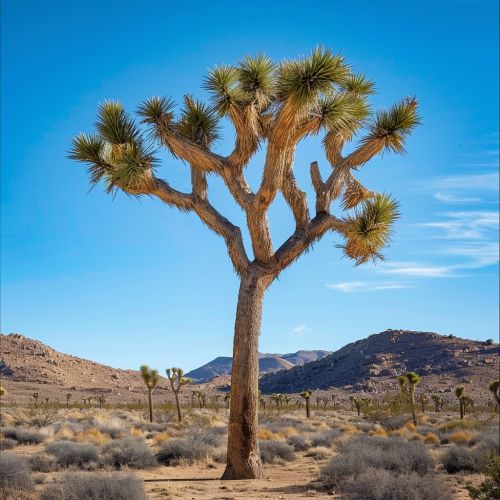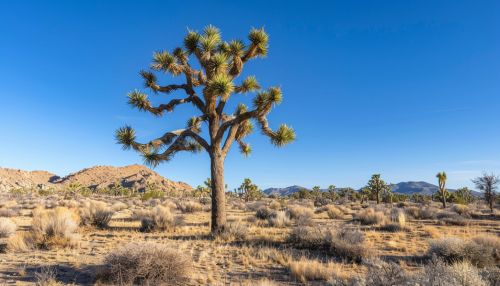Joshua Tree
Description
The Joshua Tree, scientifically known as Yucca brevifolia, is a species of yucca, a type of flowering plant, that is native to the southwestern United States. It is named for its unique shape, which is reminiscent of a person reaching up to the sky in prayer, a sight that reminded early Mormon settlers of the biblical figure Joshua. The Joshua Tree is a prominent feature of the Mojave Desert ecosystem, and it is also the namesake of the Joshua Tree National Park in California.


Biology
The Joshua Tree is an example of a monocotyledon plant, meaning it has one embryonic leaf in its seed. It is a member of the Agavaceae family, which also includes agaves and other yuccas. The tree can grow up to 20 meters tall, with a diameter of 1 to 1.5 meters. The leaves are dark green, lanceolate, and grow in a spiral pattern at the ends of branches. The tree blooms in the spring, producing clusters of white to greenish flowers.
Ecology
Joshua Trees are adapted to survive in the harsh conditions of the Mojave Desert. They have a deep and extensive root system that allows them to absorb as much water as possible. They are also able to store water in their thick, waxy leaves to use during periods of drought. The trees provide habitat and food for a variety of desert wildlife, including the Yucca Moth, which is the tree's primary pollinator.
Cultural Significance
The Joshua Tree has a significant cultural and spiritual significance for many Native American tribes in the region, including the Cahuilla and the Serrano. The tree is also a popular symbol in contemporary culture, most notably as the title of an album by the rock band U2.
Conservation
Despite their resilience, Joshua Trees are facing several threats, including climate change, wildfires, and invasive species. Efforts are being made to conserve the species and its habitat, particularly within Joshua Tree National Park.
